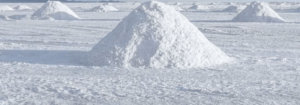
(Reuters, 18.Oct.2023) — A broad easing of U.S. oil sanctions on Venezuela will not quickly expand its output but could boost profits by returning some foreign companies to its oilfields and providing its crude to a wider set of cash-paying customers, experts said.
The South American OPEC producer received broad waivers from the U.S. on Wednesday, setting up a six-month period for reanimating oil and gas operations that have been severely constrained by the sanctions and decades of under-investment.
“This looks like a wide lifting of oil sanctions on Venezuela, which is surprising because the license is more expansive than expected,” said Francisco Monaldi, a Latin American energy expert with Rice University‘s Baker Institute.
Rolling back Trump-era sanctions, U.S. officials issued general licenses for Venezuela’s oil, gas and mining sectors in response to a deal between Venezuelan President Nicolas Maduro and the county’s opposition on the 2024 presidential election.
The administration of President Joe Biden has been seeking to boost global oil flows to ease high prices caused by sanctions on Russia and by OPEC+ output cuts. But Venezuela’s overall exports are unlikely to offset those global cuts absent sustained investment, experts said.
The oil license exempts energy firms around the world from requiring individual licenses or “comfort letters” to work with state-run oil company PDVSA, Monaldi said.
PDVSA could make a quick comeback to its traditional oil markets and offer its crude at higher prices after being forced to discount for years. The license could also reduce the company’s struggles to raise capital, import rigs, repair refineries, advance projects and secure relevant partnerships.
SLOW RECOVERY
The sanctions relief authorizes the production, sale and export of Venezuela’s crude and gas, while keeping a ban on business with Russia. A senior U.S. official said the easing will not change Iran-related sanctions linked to Venezuela.
The changes pave the way for new investments in the industry through April 18.
Payment to Venezuela for goods or services related to the oil and gas sectors is also permitted, removing a series of obstacles for PDVSA to receive cash for its oil.
Since the U.S. imposed secondary oil sanctions on Venezuela in 2020, PDVSA had been unable to fulfill its supply contracts to clients in regions from Europe to Asia. An individual authorization to Chevron Corp (CVX.N) allowed the return of Venezuela’s crude to the United States this year.
But the six-month authorization is short and the easing could be reversed if Maduro does not stick to the electoral pact. It could take more than a year for some now-idled production and export operations to have an impact on world supplies.
Venezuela has produced an average 780,000 barrels per day (bpd) of crude so far this year, above last year’s 716,000 bpd of 2022 but still far below the official 2024 goal of 1.7 million bpd.
The country averaged 2.4 million bpd before sanctions began in 2017. Only one drilling rig is active in the country, compared with more than 80 in 2014, according to Baker Hughes data.
OPEC allies have excluded Venezuela from quotas, giving it room to pump more, but experts predict a slow recovery due to the advanced deterioration of PDVSA’s infrastructure.
Output is expected to grow by between 170,000 and 200,000 bpd in the next two years, fueled by larger output by joint ventures with U.S Chevron (CVX.N), Eni (ENI.MI), Repsol (REP.MC) and other foreign companies, Monaldi said.
INVESTMENT NEEDED
Venezuela needs a long list of items to once again become a relevant oil exporter, analysts say, including dozens of drilling rigs, billions of dollars in infrastructure replacements for refineries, flow stations and crude upgraders and a reliable power supply.
Venezuela could also inaugurate gas exports if U.S.-authorized negotiations with Trinidad and Tobago for joint offshore projects progress, while a portion of oil currently going to China could end up in the Caribbean if Maduro re-establishes its Petrocaribe supply program.
With U.S. authorizations clearing the way for more exports to the U.S., Europe and the Caribbean, Venezuela could in the short term divert more of its oil currently going to China, the analysts said.
Venezuela’s exports to China directly and through trans-shipments hubs have fallen to 437,000 bpd so far this year from 477,000 bpd in 2022, according to vessel monitoring data.
If Venezuela and China reach a pact to resume debt payments and expand joint oil projects, that could add some extra 100,000 bpd of output in the two-year period, Monaldi said, potentially expanding exports to that destination again.
But if no sustained investment happens, it is difficult to predict overall output of more than 1.1 million bpd in the short and medium terms, he said.
____________________
Reporting by Marianna Parraga; Editing by Julia Symmes Cobb, David Gregorio and William Mallard

